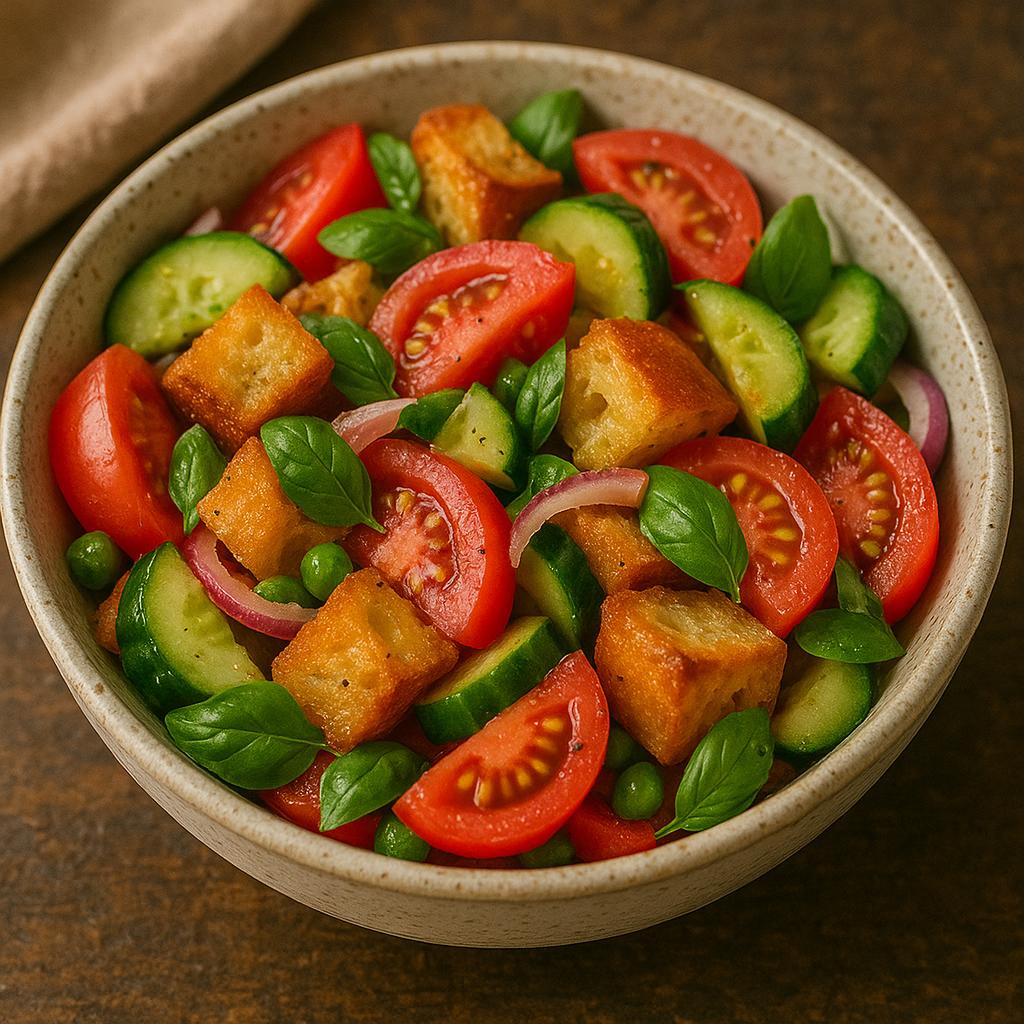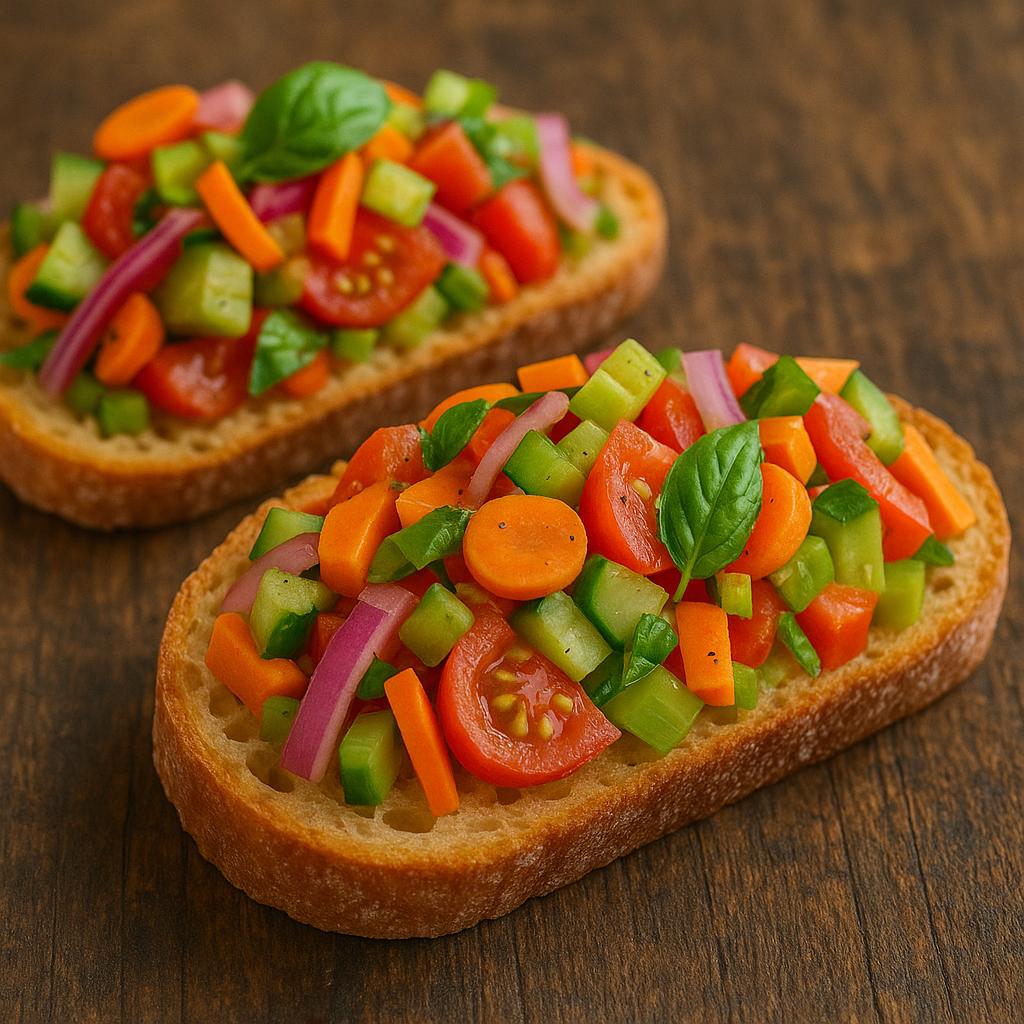
Tuscan Panzanella Recipe with Regional Twists
Panzanella is a dish of poor Italian cuisine that has its origins in Tuscany, specifically in Florence. The term panzanella may come from the union of two words, bread and Zanella (as the tureen was called in ancient times).
The peasants of the time being very poor could not throw away bread even if it was stale, so wetting it with water and adding the vegetables from the garden of the moment gave birth to panzanella.
Others, on the other hand, think that the origin of panzanella is to be attributed to the fishermen who used to take bread on fishing boats and when it became stale they would moisten it with sea water and add whatever vegetables they had on hand. Rivers of words have been written about this poor but exquisite dish, and there have even been those who have sung its praises in a poem.
Ingredients and preparation
for 4 people
- about 6 slices of stale bread
- 1 cucumber
- 1 red onion
- 2 or 3 perini tomatoes
- a few basil leaves
- olive oil
- salt
- a dash of wine vinegar.
The bread for the classic Tuscan panzanella must be strictly Tuscan bread, i.e. without salt. Possibly baked in a wood-fired oven. It must be at least 3/4 days old, i.e. it must be stale and very hard.
It is soaked for a few minutes in a little water, after which the bread is squeezed out and finely crumbled. Then add the vegetables cut into thin slices and not very large pieces, a little salt, enough olive oil and a few drops of wine vinegar.
Mix everything well and garnish with a few chopped basil leaves. One recommendation, always chop the basil with your hands, never cut it with a knife otherwise it turns black.
For those who don't like soaked bread, I suggest breaking the bread into many small pieces, put the chopped tomato together and leave it in the fridge for a few hours. Perhaps do this preparation the day before.
The water that the tomatoes will lose will soften the bread without making it too wet. Shortly before serving, add the other vegetables and seasoning. Keep it in the fridge for at least an hour before serving. This will allow all the flavours of its ingredients to mix well.
This is the classic recipe for Tuscan panzanella, as it has been prepared since ancient times. However, there is no lack of rather tasty variants.
Panzanella, variants by region
It is also prepared in this way in the Livorno area. In this version, soaked bread, already prepared with the basic recipe, is mixed with anchovy fillets in extra virgin olive oil, diced tomatoes, red onion, capers, oregano, salt and pepper.
In Sicily, anchovies, capers and garlic are used in addition to vegetables.
In Umbria, stale bread is soaked in a solution of water and vinegar.
In Campania, buffalo mozzarella is added.
In Rome, it is customary to soak the bread crust without breaking it.
As for the aromatic herbs to be added to panzanella, in the original recipe it is basil, while in other regions other herbs such as mint, chives, oregano or even parsley are added.
However, precisely because of its poor origin, this dish lends itself very much to everyone's imagination and to what is at home at the time. It can be prepared in a thousand different ways, but always with a bread base.
There are also slightly stranger and fancier variants, such as the one using a few cubes of watermelon, chunks of feta cheese, and honey for seasoning, combined with soaked bread and the usual vegetables of the classic panzanella.
Roman-style panzanella

The preparation is very simple, cut slices of stale bread, soak them with water and place them in a tray. Dress them with a little oil, a splash of vinegar and a little salt. In the meantime, prepare the dressing to put on top of the bread slices.
In a bowl, wash and dice the tomatoes, season them with oil and pieces of basil leaves, mix everything well and put the mixture on the slices of bread you prepared earlier. It is a tasty appetiser or even a summer first course, fresh and does not require the use of the cooker.
Also in an Umbrian variant, the vegetables are placed on top of the slices of bread, moistened but left whole.
The procedure is the same and so is the seasoning of the bread slices. For the mixture to be placed on top of the bread, instead of just tomatoes, cucumbers and red onion are also put in. all cut into small slices or chunks, seasoned with olive oil, salt and a few basil leaves on top.
In the same region, variants can be found that also include carrots, or strips of salad instead of cucumbers, and even celery cut into small pieces. However, for this type of panzanella, the bread slices must remain whole and serve as a base for the various toppings.










